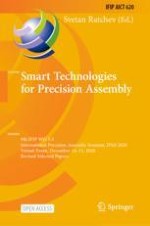
Open Access 2021 | OriginalPaper | Chapter
Human and Workcell Event Recognition and Its Application Areas in Industrial Assembly
Authors : Matthias Propst, Sharath Chandra Akkaladevi, Michael Hofmann, Christian Wögerer, Andreas Pichler
Published in: Smart Technologies for Precision Assembly
Publisher: Springer International Publishing
Activate our intelligent search to find suitable subject content or patents.
Select sections of text to find matching patents with Artificial Intelligence. powered by
Select sections of text to find additional relevant content using AI-assisted search. powered by